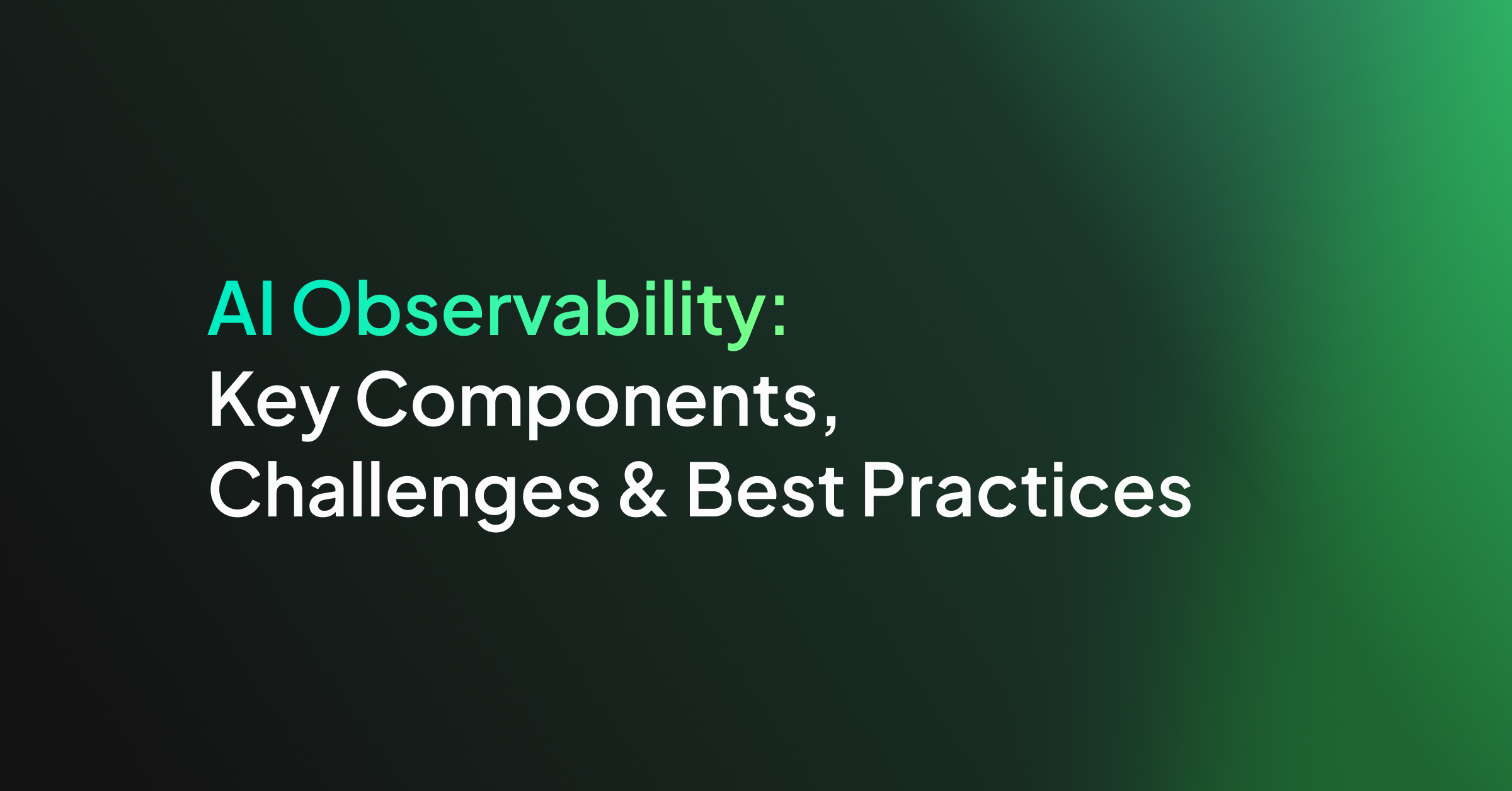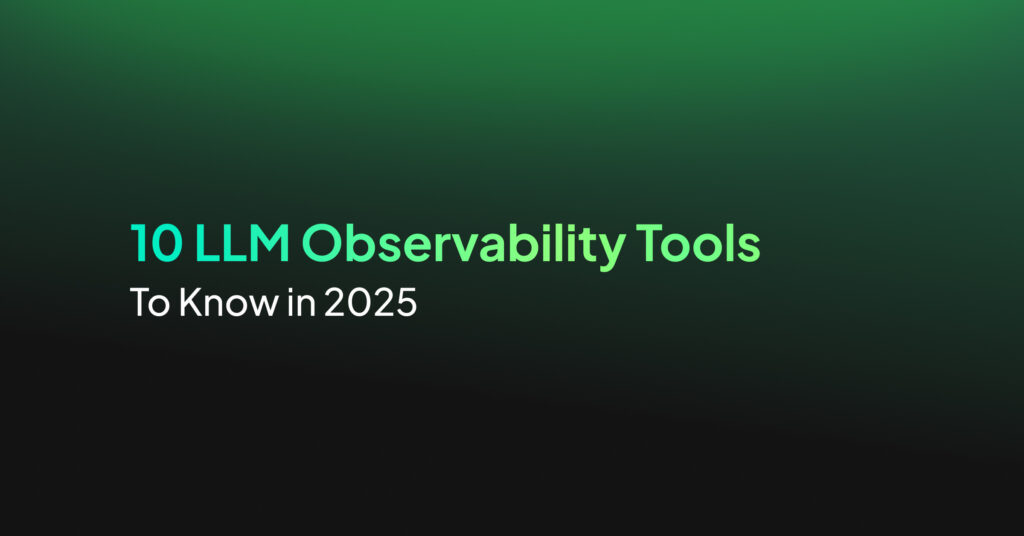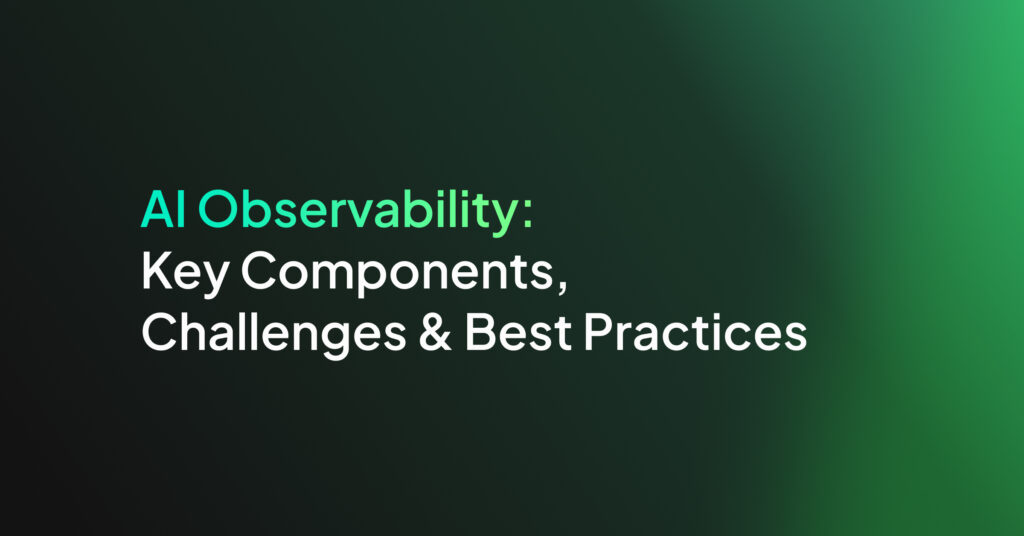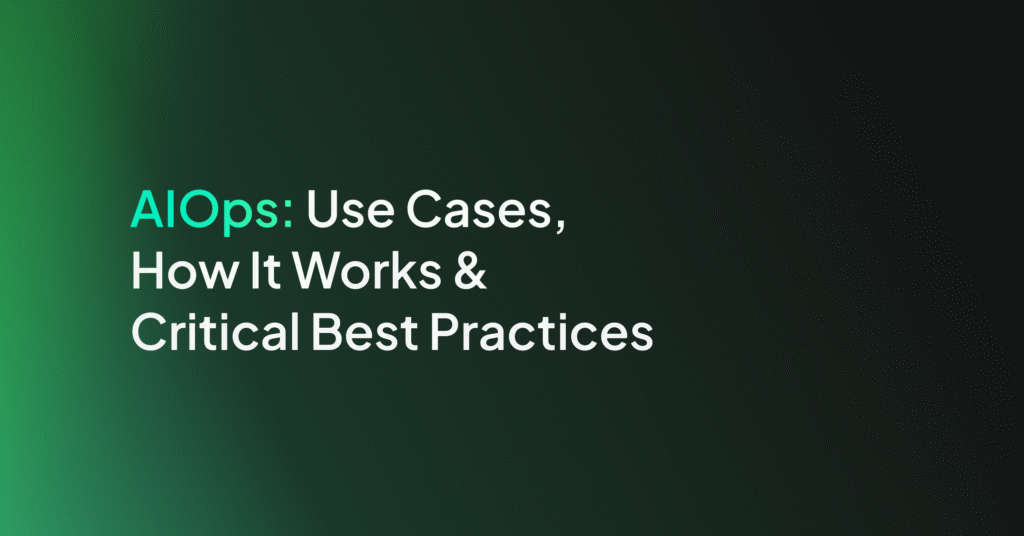LLM Observability: Challenges, Key Components & Best Practices

Common Challenges in LLM Applications
Deploying LLMs in real-world applications presents several challenges:
- Data Management: LLMs require vast datasets for training. Ensuring data quality, relevance, and diversity is essential to prevent biases and inaccuracies. Handling unstructured data and parsing complex formats, such as PDFs with embedded tables, adds complexity.
- Computational Resources: Training LLMs demands significant computational power, leading to high costs and energy consumption. Efficient resource management is crucial to balance performance and expenses.
- Model Scalability: As LLMs grow in size, scaling them while maintaining performance becomes challenging. This includes managing model depth, width, and data size to ensure efficiency.
- Accuracy and Reliability: LLMs can produce inaccurate or misleading information, known as “hallucinations.” Ensuring the accuracy and reliability of outputs is critical, especially in applications like customer support and content creation.
- Data Privacy and Security: LLMs often process sensitive information, raising concerns about data privacy and security. Implementing robust measures to protect user data is essential.
- Evaluation Metrics: Assessing LLM performance is complex due to the lack of standardized evaluation metrics. Balancing objective measures with human judgment is necessary to capture the nuances of language understanding.
- Ethical Considerations: LLMs may inadvertently generate biased or inappropriate content. Addressing ethical concerns involves careful monitoring and implementing safeguards to prevent misuse.
- Integration and Deployment: Incorporating LLMs into existing systems requires careful planning to ensure compatibility and efficiency. This includes managing latency, scalability, and user experience.
Key Components of LLM Observability
Monitoring and Tracing Techniques
LLM monitoring involves collecting real-time data on model performance, such as metrics on latency, throughput, and error rates. This data aids in understanding how LLMs interact with different inputs and environments. Tracing focuses on following specific requests through the system, providing insights into how data flows and is processed within the model.
Tracing methods allow for detailed observation of LLM decision paths, providing context for debugging and optimization. By implementing distributed tracing, development teams can capture and visualize dependencies across system components.
Metrics and Evaluation Methods
Common metrics for assessing LLM performance include accuracy, response time, and user satisfaction scores, which provide quantifiable insights into model success. By setting clear benchmarks, metrics enable teams to evaluate LLMs consistently and identify areas requiring improvement.
Evaluation often involves comparing model outputs against a set of predefined standards or competitive benchmarks. To accurately assess LLM effectiveness, it’s essential to adopt evaluation methods that reflect varied real-world use cases. This might include A/B testing, user feedback surveys, or stress testing under different conditions.
Handling Non-Deterministic Outputs
Large language models can produce non-deterministic outputs due to their probabilistic nature, complicating output consistency and reliability. Managing this non-determinism requires techniques that ensure outputs remain useful and aligned with expectations. Implementing constraints and structured output formats can reduce variability.
Another approach is to use ensemble methods, where multiple instances of an LLM generate outputs, and these results are then reconciled to form a more stable response. Ensembles can average variabilities and provide a form of consensus output.
Dealing with Mixed User Intent
Mixed user intent poses a significant challenge for LLMs, as users may present ambiguous or conflicting information that models need to process. Organizations must improve the model’s ability to discern underlying intentions, which can be achieved through improved contextual understanding and intent classification methodologies.
Incorporating natural language processing techniques that detect subtleties and nuances in user input can aid in resolving mixed intent challenges. Integrating user feedback mechanisms is another effective strategy, allowing LLMs to learn from corrections over time.
LLM Observability vs LLM Monitoring: Understanding the Differences
While often used interchangeably, observability and monitoring serve different purposes in LLM management.
Monitoring involves tracking predefined metrics such as throughput and errors, providing a broad view of system health. This approach does not offer insights into the root causes of issues. Monitoring is useful for raising alerts when specified thresholds are breached but lacks the depth for root cause analysis.
Observability investigates deeper, enabling detailed analysis and understanding of an LLM’s internal state and interactions, providing more nuanced insights and proactive problem-solving. Observability offers a data-driven approach, capturing metrics, logs, and traces to create an in-depth picture of system operations. It supports troubleshooting by revealing the path of requests and highlighting performance bottlenecks or unexpected behaviors.
Related content: Read our guide to real user monitoring
Techniques for Improving LLM Performance
There are several techniques that can be used to improve the way large language models operate and support observability efforts.
Prompt Engineering
Prompt engineering involves crafting inputs that elicit desired model behaviors. By designing effective prompts, developers can guide LLMs to generate more accurate and relevant outputs. This requires understanding the internal mechanics of LLMs, allowing for the customization of input patterns that align with task objectives.
Testing different prompt strategies can highlight underlying model capabilities and limitations, providing insights for further refinement. Experimenting with variations in prompt structure, length, and framing can result in more reliable output patterns.
Fine-Tuning and Adaptation
By adjusting pre-trained models on domain-specific data, developers can increase relevance and accuracy. The fine-tuning process improves performance in targeted use cases and can shed light on model behavior under different conditions, enabling better observability and control over outputs.
Adaptation involves recalibrating model parameters based on real-world data feedback, ensuring the LLM adapts to evolving contexts and user expectations. This iterative refinement improves observability by continuously aligning model outputs with intended outcomes.
Retrieval Augmented Generation
Retrieval augmented generation (RAG) techniques improve LLM observability by combining external data retrieval with generative capabilities. This method involves retrieving pertinent information to supplement model-generated texts, providing contextually enriched responses. With RAG, LLMs can produce more consistent and informed outputs, reducing ambiguity.
Incorporating RAG enables a feedback loop where retrieved data informs the model’s understanding and enhances observability. This integration allows developers to identify knowledge gaps or inconsistencies in the model’s knowledge base, informing targeted improvements.
User Feedback
Incorporating user feedback into LLM activity is important for ensuring models meet user needs. By systematically collecting and analyzing user interactions, organizations can gain insights into how LLMs are performing and where adjustments may be needed. Feedback-driven development allows LLMs to continuously adapt based on real-world usage data.
Regularly updating LLMs with feedback-derived insights helps address users’ changing needs and address misunderstandings quickly. This user-centric development approach emphasizes responsiveness and adaptability.
Best Practices for Implementing LLM Observability
Here are some of the ways that organizations can ensure the most comprehensive observability for their LLM projects.
Establish Clear Observability Goals
These goals guide the monitoring strategy and tool selection. Defining what aspects of LLM performance and behavior are crucial ensures that observability initiatives are targeted and efficient. Goals should focus on critical metrics such as system stability, accuracy, and response times, aligning them with broader organizational objectives.
Clearly articulated targets improve the ability to measure observability success and justify investments in necessary tools and resources. Regularly revisiting and updating these goals based on current business requirements and technological advancements ensures that observability practices remain relevant.
Use Comprehensive and Relevant Metrics
An effective metric set should include both technical and user-facing aspects of LLM operations, offering a multi-faceted view of performance. Commonly monitored metrics include error rates, latency, model accuracy, and user feedback, which together inform a holistic understanding of system health and user experience.
Metrics need to be actionable, enabling teams to identify specific areas for improvement and track progress over time. By selecting metrics that align with strategic priorities, observability efforts can better support continual optimization and alignment with business goals.
Ensure End-to-End Tracing
Tracing allows for a detailed examination of how requests are processed through various components, providing insights into performance bottlenecks and potential error sources. By capturing complete interaction paths, tracing helps identify inefficiencies and supports precise debugging and optimization efforts.
Implementing cross-service tracing aids in understanding the impact of each microservice on overall performance. Tools that integrate distributed tracing capabilities can reveal complex interdependencies, supporting proactive issue resolution.
Maintain Data Privacy and Compliance
As observability involves collecting and analyzing various types of data, organizations must implement privacy safeguards to protect user information. Compliance with regulations such as GDPR or CCPA is mandatory, requiring organizations to manage data responsibly and transparently within observability frameworks.
Enforcing strict access controls and data anonymization techniques ensures that sensitive information remains secure during observability processes. Continuous auditing and privacy impact assessments can help institutions stay compliant, identifying potential vulnerabilities.
Regularly Update and Validate Models
Continuous learning and adaptation to new data and user interactions help maintain model relevance and accuracy. Regular validation processes assess whether updates improve performance, identify potential areas for further tuning, and ensure alignment with business objectives.
Timely updates account for shifts in user expectations and emerging technologies, reducing the risk of degradation in output quality or relevance. Establishing a systematic validation framework helps in maintaining the accuracy and reliability of models in dynamic environments.
LLM Observability with Coralogix
Coralogix sets itself apart in observability with its modern architecture, enabling real-time insights into logs, metrics, and traces with built-in cost optimization. Coralogix’s straightforward pricing covers all its platform offerings including APM, RUM, SIEM, infrastructure monitoring and much more. With unparalleled support that features less than 1 minute response times and 1 hour resolution times, Coralogix is a leading choice for thousands of organizations across the globe.





